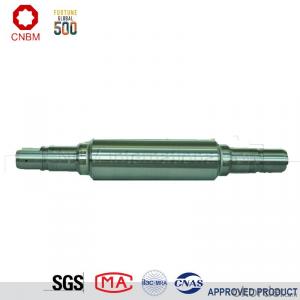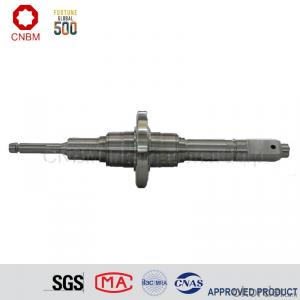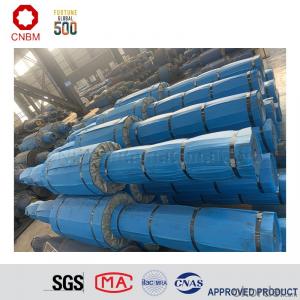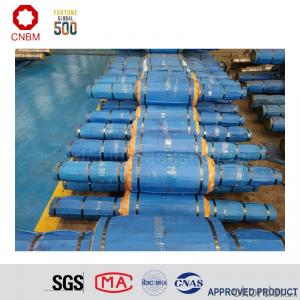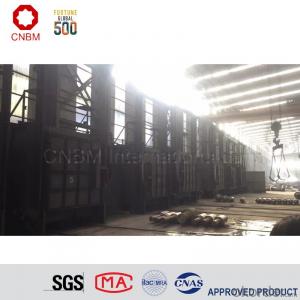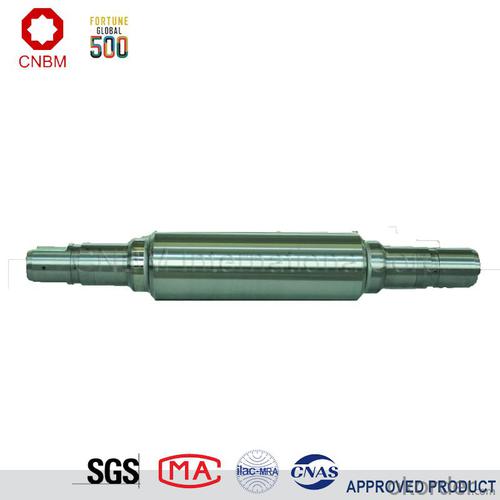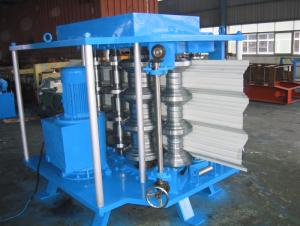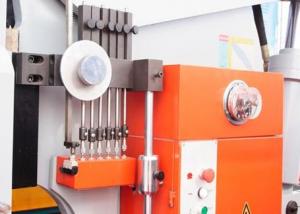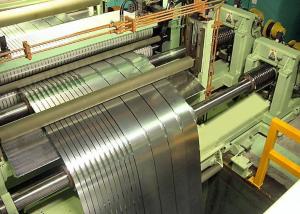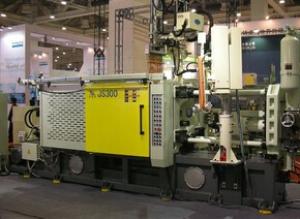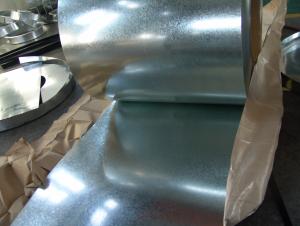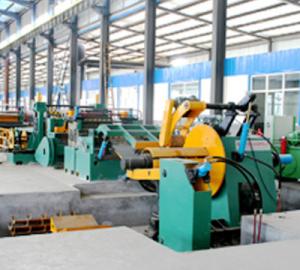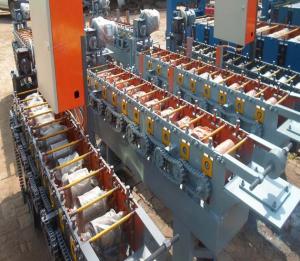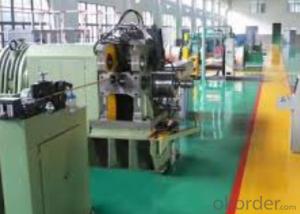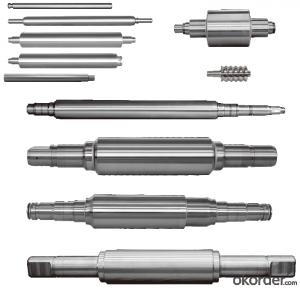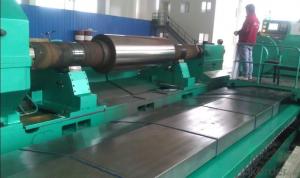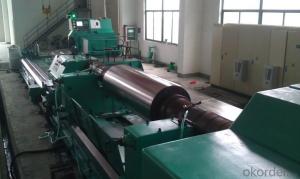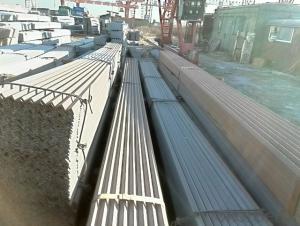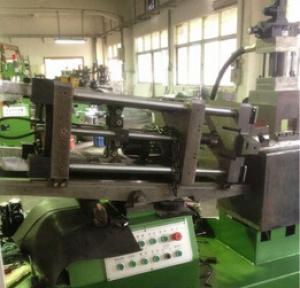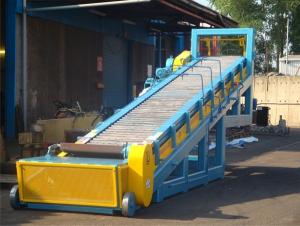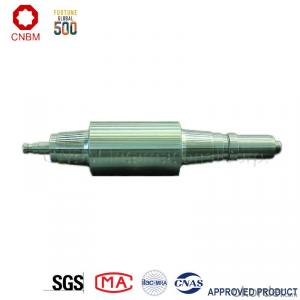Mill Rolls High Speed Steel Roller With Good Quality
- Loading Port:
- Tianjin
- Payment Terms:
- TT OR LC
- Min Order Qty:
- 2 m.t.
- Supply Capability:
- 41000 m.t./month
OKorder Service Pledge
OKorder Financial Service
You Might Also Like
Specification
Company Profile
CNBM International Corporation (CNBM International) is the most important trading platform of CNBM Group Corporation, a state-owned company under the direct supervision of State-owned Assets Supervision and Administration Commission of the State Council.
CNBM Group is integrated with four business segments: Manufacture, R&D,Sets of equipment and Logistics trading.Mill rolls are our main products.
CNBM International is highly recognized by its business partners and clients all over the world and has established good business relationship with the customers in over 120 countries and regions all over the world.
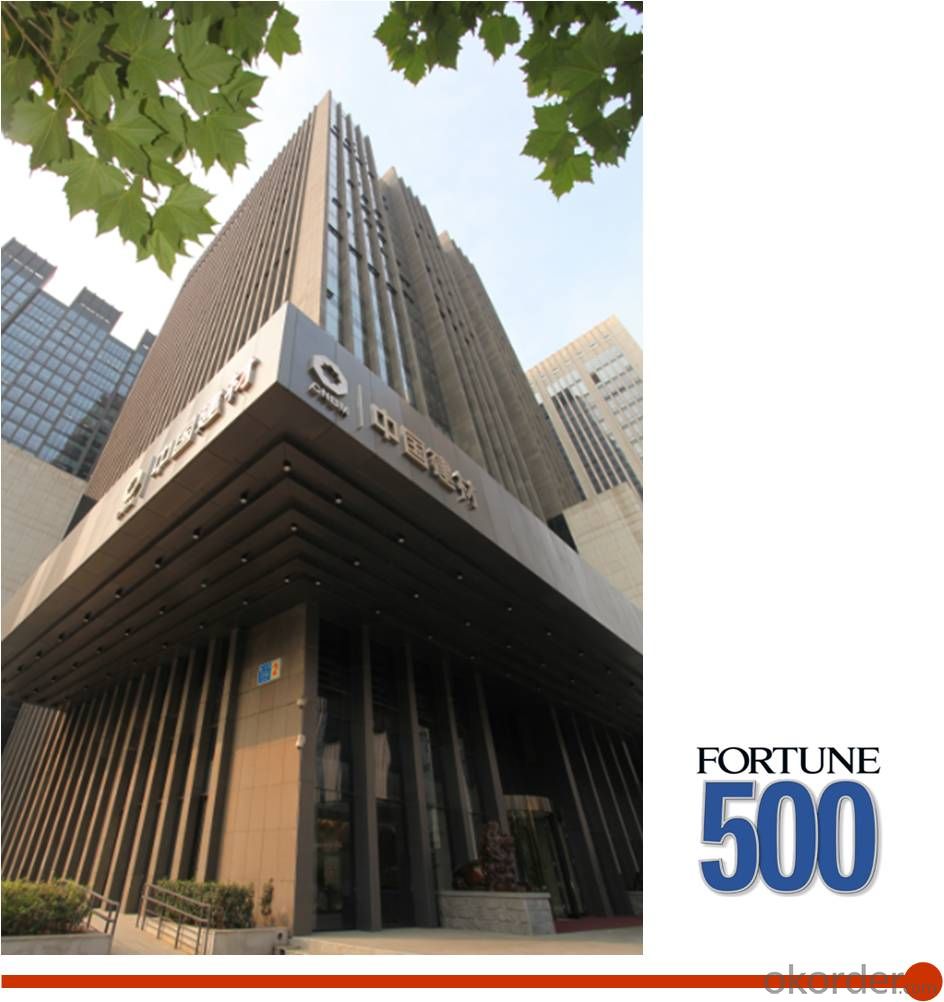
The product introduction of mill roll
Equipped with advanced technological facilities on melting, casting, forging, heat treating and mechanical machining, our factory has formed 9 professional complete roll manufacturing lines of cast steel, cast iron and forged steel rolls such as strip mill rolls, heavy section mill rolls, wire & bar rolls, special shaped rolls and small-sized cold rolls and specialized production lines of bloom and slab CCM, coke oven equipments and wind power products. Annual production capacity of mill rolls is 500,000 tons, metallurgical equipment is 80,000 tons.

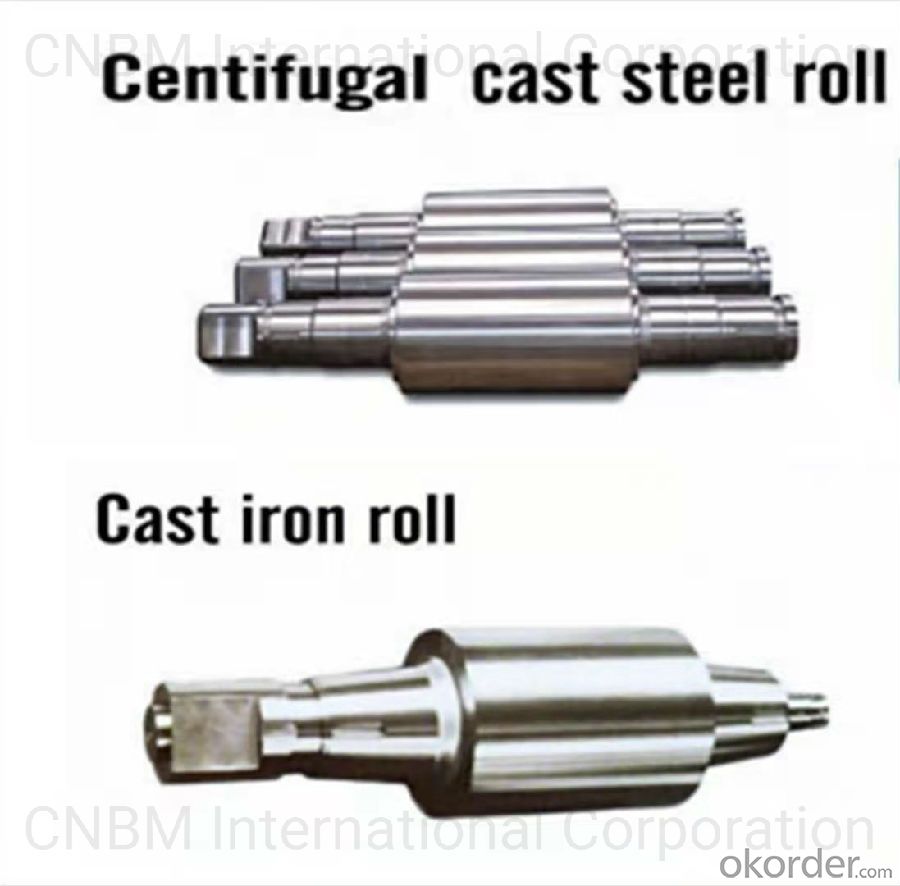
Workshop
Workshop is the core of our company and undertakes all of scientific research work. The company specially produces and supplies all kinds of roll used for hot strip mill, cold strip mill, plate & heavy plate mill, large-sized section mill, universal mill etc.
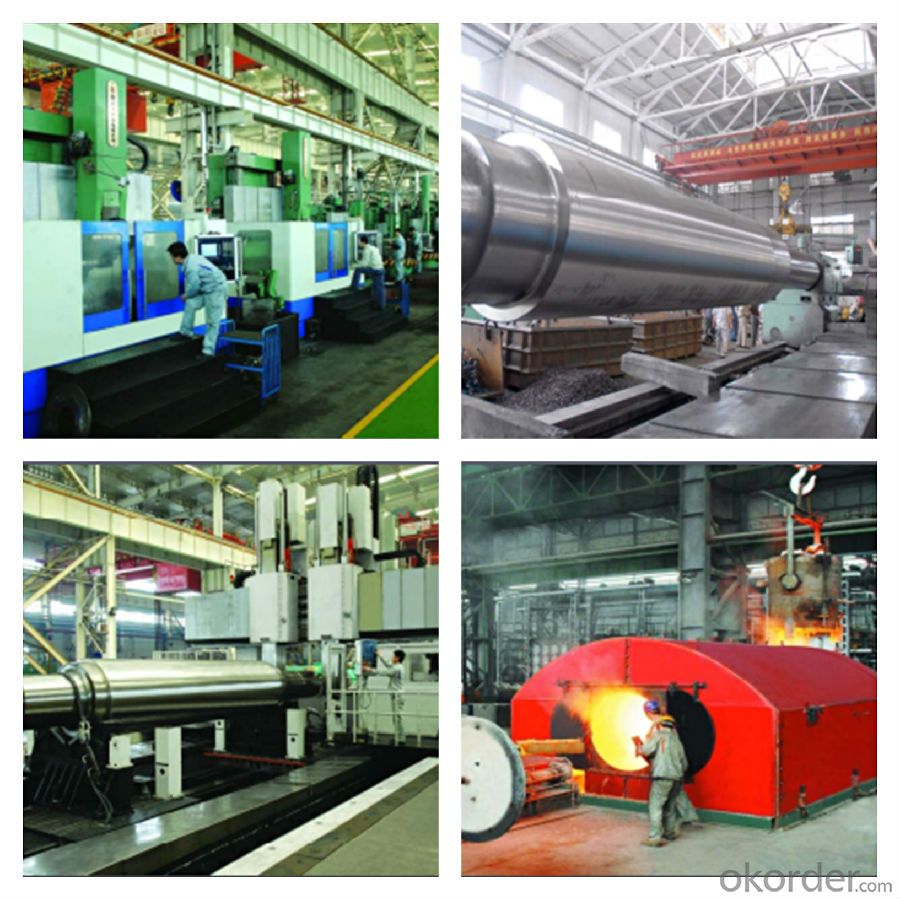
Products & Specification
| Mill | Application | Material | Product Specification | ||
| Hot Strip Mill | Large-sized vertical roll | Special alloy cast roll, Adamite | All Sizes | ||
| Small-sized vertical roll | Adamite, HiCr iron | ||||
| Roughing work roll | Special alloy cast steel, Adamite, HiCr steel, Semi-HSS, HiCr iron | ||||
| Finish rolling | Early stand work roll | HiCr iron, HSS | |||
| Later stand work roll | ICDP, HSS | ||||
| Finishing back-up roll | Duplex cast steel | D≤¢2000,W≤80t | |||
| Alloy forged steel | D≤¢2000,W≤75t | ||||
| Temper rolling | Work roll | HiCr iron | All Sizes | ||
| Alloy forged steel | |||||
| Back-up roll | ICDP | ||||
| Duplex cast steel | D≤¢2000, W≤80t | ||||
| Alloy forged steel | D≤¢2000, W≤75t | ||||
| Mill | Application | Material | Product specification |
Cold strip mill & Single stand cold mill | Work roll | Alloy forged steel | All Sizes |
| Intermediate roll | Alloy forged steel | ||
| Temper roll | Alloy forged steel | ||
| Back-up roll | Duplex cast steel | D≤¢2000,W≤80t | |
| Alloy forged steel | D≤¢2000,W≤75t | ||
Largesized universal structural mill | Break-down roll | Special alloy cast steel, alloy nodular iron | All Sizes |
| Horizontal collar | High carbon adamite (duplex) | ||
| Vertical collar | High carbon adamite, HiCr iron | ||
| Edger roll Edger roll | High carbon adamite | ||
| Shaft | Alloy forged steel |
| Mill | Application | Marterial | Product Specification | |
| CSP | Vertical Roll | Adamite, Special alloy cast steel, HiCr iron | All Sizes | |
| Roughing work roll | Semi-HSS, HiCr Steel | |||
| Finish rolling | Early stand | HiCr iron, HSS | ||
| Later stand | ICDP, HSS | |||
| Roughing & Finishing back-up roll | Duplex cast steel | D≤¢2000,W≤80t | ||
| Alloy forged steel | D≤¢2000,W≤75t | |||
| Steckel Mill | Vertical roll | Adamite, Special alloy cast steel | All Sizes | |
| Roughing work roll | ICDP, HiCr iron | |||
| Finishing work roll | HiCr iron, ICDP | |||
| Back-up roll | Duplex cast steel | D≤¢2000,W≤80t | ||
| Alloy forged steel | D≤¢2000,W≤75t | |||
| Plate & Heavy plate mill | Rough rolling | 2-hi work roll | Special alloy cast steel, Tool steel | All Sizes |
| 4-hi work roll | HiCr iron, ICDP | |||
| Finishing work roll | HiCr iron, ICDP | |||
| Single stand work roll | HiCr iron, ICDP | |||
| Back-up roll | Duplex cast steel | D≤¢2000,W≤80t | ||
| Alloy forged steel | D≤¢2000,W≤75t | |||
Quality Control
The company has the most advanced experimental and testing equipments in global mill roll industry, including direct-reading spectrometer, spectrum analyzer , X-ray fluorescence analyzer, scanning electronic microscope, energy disperse spectroscopy, X-ray diffractometer, image analyzer, high/low temperature metallographic microscope, X-ray stress meter, brittleness temperature tester, thermal analogue machine, dilatometer, macro and micro hardness tester, OMNISCAM-1X automatic flaw detection, USN60 ultrasonic flaw detector, magnetic powder and non-destructive flaw detection etc,. The advanced inspection equipments and experimental methods provide guarantee for quality control and experiment on material, usability test and performance.
Professionals & Comprehensive Inspection
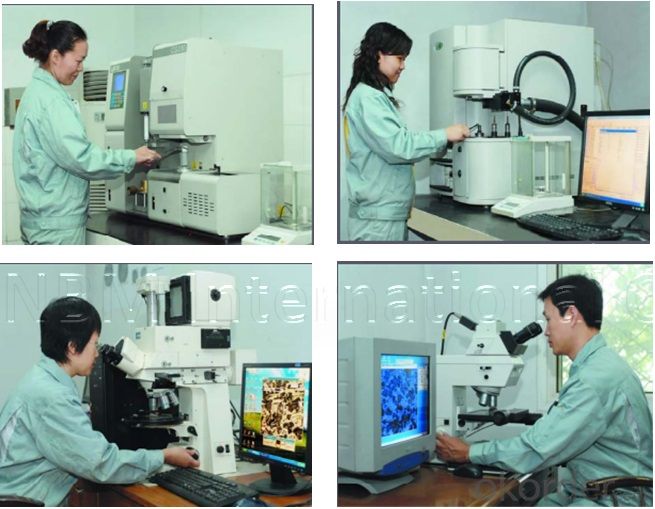
The factories of CNBM invested 2.3 billion RMB for large-scale
CNBM international Corporation has completed equipment and technology upgrade transformation, which was concentrated on three projects, production line of centrifugal casting rolls for hot strip and plate mill, forged roll for cold/hot strip mill, national class technology center and roll material lab. Through upgrade transformation, the following targets have been achideved:
(1)It becomes the world's biggest specialized mill roll maker with the largest production scale, the most complete specifications of products and the most extensive coverage of various rolls used on rolling mill.
(2) The technology of equipments has reached international leading level.
(3) "Mechanization, automation, intellectualization, digitization" of equipments obviously improve the quality control ability.
(4) New types of research instruments improve the R&D capacity of products.
Customers Visit
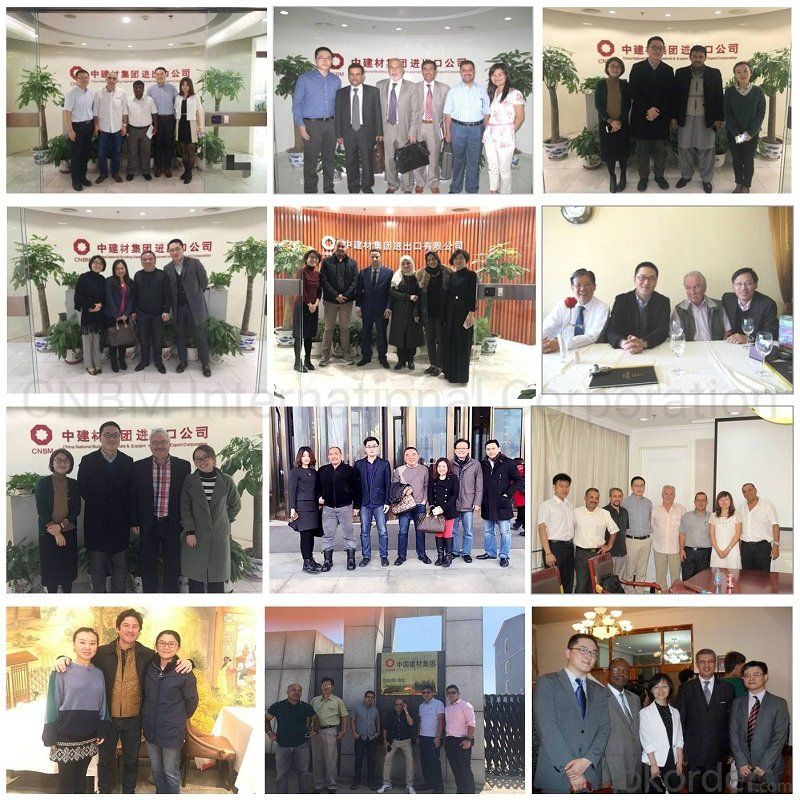
FAQ
Q:Are you a trading company or manufacturer?
A:CNBM is a large-scale central governmental industrial group with its own manufacturing sector, research and development sector, trading sector and logistics sector.
Q:I have some special requirement about specifications.
A:We have a well-rounded product range, which endows us with the capability of applying many special specifications. Please feel free to contact us with yours.
Q:Do you accept OEM service?
A:Yes, we do.
Q:What is your delivery time?
A:It depends on the size/complexity of your order and our own production schedule. Usually we provide a faster delivery than the industry's average.
Q:What is the payment term?
A:Our payment terms are negotiable.
Q:Can I have my own logo on the product?
A:Sure, we can apply your own logo on the products according to your requirement.
- Q: What are the common melting methods used with metal casting machinery?
- The common melting methods used with metal casting machinery include electric arc furnace melting, induction melting, and cupola melting.
- Q: How do you ensure the strength, hardness, and durability of castings made with metal casting machinery?
- Achieving the desired strength, hardness, and durability of castings made with metal casting machinery requires careful attention to several critical steps and considerations. These include: 1. Selection of Materials: It is crucial to choose the appropriate metal alloy that meets the specific requirements of the application. Different metals have varying properties, so careful consideration is necessary to achieve the desired strength, hardness, and durability. 2. Mold Design: The design of the mold plays a significant role in determining the final properties of the castings. Proper gating and riser systems are necessary to ensure uniform filling and solidification of the molten metal. Additionally, factors like thermal expansion, contraction, and venting need to be considered to avoid defects and achieve optimal casting quality. 3. Melting and Pouring: The melting process must be carefully controlled to achieve the desired metallurgical properties. Temperature control and proper addition of alloying elements are critical for achieving the required strength, hardness, and durability. Precise pouring techniques are necessary to prevent turbulence and air entrapment, which can lead to defects. 4. Solidification and Cooling: The cooling process is crucial for the development of the desired microstructure and mechanical properties of the castings. Controlling the cooling rate and avoiding rapid cooling or thermal gradients is necessary to prevent the formation of cracks, porosity, and other defects that can compromise the strength and durability of the castings. 5. Heat Treatment: Post-casting heat treatment processes such as annealing, quenching, tempering, or stress relieving can further enhance the strength, hardness, and toughness of the castings. These processes help optimize the microstructure and eliminate internal stresses, resulting in improved mechanical properties. 6. Quality Control and Testing: Regular inspection and testing of the castings are necessary to ensure compliance with specified standards and requirements. Non-destructive testing techniques such as X-ray, ultrasonic testing, or visual inspection can identify any defects or inconsistencies in the castings that may affect their strength and durability. By carefully considering these factors and implementing proper control measures throughout the casting process, it is possible to ensure the strength, hardness, and durability of castings made with metal casting machinery.
- Q: How do you assess the demand and market potential for metal casting equipment?
- Assessing the demand and market potential for metal casting equipment involves several key steps. Here is a comprehensive approach to conducting this assessment: 1. Market Research: Start by conducting thorough market research to identify the current and future demand for metal casting equipment. This research should include analyzing industry reports, market trends, and competitive analysis. It is essential to understand the size of the market, growth rate, and key factors influencing demand. 2. Customer Analysis: Identify the target customers for metal casting equipment. This may include industrial manufacturers, foundries, automotive companies, aerospace industry, and other sectors that utilize metal casting equipment. Understand their needs, preferences, and purchasing behavior. Conduct surveys or interviews with potential customers to gather feedback and insights. 3. Competitor Analysis: Analyze the competitive landscape to identify the key players in the metal casting equipment market. Evaluate their market share, product offerings, pricing strategies, and distribution channels. Assess their strengths and weaknesses to identify opportunities for differentiation. 4. Technological Advancements: Stay up-to-date with the latest technological advancements in metal casting equipment. Assess the impact of new technologies such as 3D printing, automation, and advanced materials on the market potential. Understand how these advancements can shape the demand for traditional metal casting equipment. 5. Industry Regulations: Understand the regulatory environment and industry standards related to metal casting equipment. Compliance with safety regulations and quality standards is crucial for market acceptance. Assess any upcoming changes in regulations that may impact the demand for metal casting equipment. 6. Economic Factors: Consider the economic factors that influence the demand for metal casting equipment. Evaluate the overall economic growth, industrial production, and investment in infrastructure projects. Analyze the impact of economic cycles on the demand for metal casting equipment. 7. Pricing and Profitability: Determine the pricing strategy that aligns with the market potential. Evaluate the cost structure, including raw materials, manufacturing, and distribution costs, to ensure profitability. Consider the pricing strategies of competitors and the value proposition of your metal casting equipment. 8. Market Entry Strategy: Based on the assessment of demand and market potential, develop a market entry strategy. Identify the target segments and geographies to focus on. Determine the appropriate marketing and distribution channels to reach potential customers effectively. 9. Monitor and Adapt: Continuously monitor the market dynamics and adapt the strategy accordingly. Stay updated with industry news, technological advancements, and customer feedback. Regularly assess the demand and market potential to identify new opportunities or adjust the strategy as needed. By following these steps, you can assess the demand and market potential for metal casting equipment effectively and make informed business decisions.
- Q: What is the role of pattern making in metal casting machinery?
- The role of pattern making in metal casting machinery is to create a replica of the desired final product in wood, plastic, or other materials. This pattern is used to make the mold in which the molten metal will be poured, ensuring that the finished casting is accurate and free from defects. Pattern making is crucial for achieving the desired shape, size, and surface finish of the cast metal component.
- Q: How are alloys prepared and controlled for die casting in metal casting machinery?
- The manufacture and regulation of alloys for metal casting machinery involve a series of steps to guarantee the desired properties and quality of the final product. To begin with, the alloy composition is determined based on the specific requirements of the die casting process. This involves selecting the appropriate combination of metals and additives that will yield the desired strength, hardness, corrosion resistance, and other necessary properties for the end product. Once the alloy composition is established, the raw materials are meticulously measured and blended in precise proportions. This procedure is usually conducted in a controlled environment, such as a foundry, where the ingredients are weighed and added to a furnace or melting pot. The subsequent step entails melting the alloy mixture. The temperature and duration required for melting depend on the specific alloy being utilized. The molten alloy is heated to a specific temperature, often monitored and controlled using thermocouples, to guarantee complete melting and uniformity of the mixture. During the melting process, fluxes may be incorporated to eliminate impurities and ensure a clean alloy. Fluxes aid in the removal of oxides and other contaminants that could have an adverse impact on the properties of the final product. Once the alloy is molten and devoid of impurities, it is transferred to the die casting machine. The molten alloy is injected into a die, which is a metal mold that determines the shape and dimensions of the final product. Various parameters are monitored and adjusted to regulate the die casting process. These include the temperature of the molten alloy, the injection pressure, the rate of cooling, and the cycle time. By carefully controlling these parameters, the quality and consistency of the castings can be guaranteed. Apart from the process parameters, the die casting machinery itself plays a vital role in controlling the alloy. The machine must be accurately calibrated and maintained to ensure precise and repeatable casting results. Regular inspections and maintenance are carried out to ensure that the machinery is in optimal working condition. Overall, the preparation and control of alloys for die casting in metal casting machinery involve meticulous selection of alloy composition, precise measurement and blending of raw materials, controlled melting and fluxing processes, and monitoring and adjustment of process parameters. Through these steps, the desired properties and quality of the castings can be achieved.
- Q: How are the defects identified and repaired in metal casting machinery?
- Defects in metal casting machinery can be identified through various methods such as visual inspection, non-destructive testing (NDT), and analysis of casting defects. Visual inspection involves closely examining the castings for any visible defects such as cracks, porosity, or misshapen parts. NDT techniques like magnetic particle inspection, ultrasonic testing, or radiographic examination are used to detect defects that may be present internally and not visible to the naked eye. Once the defects are identified, the next step is to repair them. The repair process depends on the type and severity of the defect. For minor defects, simple repair techniques like grinding, sanding, or welding can be employed to rectify the issue. More complex defects may require more extensive repairs such as machining, re-melting and re-pouring, or even replacing the defective part altogether. In some cases, defects can be prevented or minimized by implementing process control measures during the casting process. This involves closely monitoring and controlling factors such as temperature, pressure, and cooling rates to ensure proper solidification and minimize the occurrence of defects. It is important to note that the identification and repair of defects in metal casting machinery require skilled technicians who are familiar with the casting processes and have a deep understanding of the materials involved. Regular maintenance and inspection of the machinery can also help in identifying and addressing potential defects before they become major issues.
- Q: How does metal casting machinery handle the prevention and control of noise pollution?
- Noise pollution in metal casting machinery is typically addressed through multiple measures. The main objective is to minimize the noise impact on the environment and the workers operating the machinery. One effective approach is the utilization of soundproof enclosures or cabins. These enclosures are specifically designed to confine the machinery noise, preventing its spread beyond the designated area. Sound-absorbing materials are commonly incorporated within the enclosures to dampen and decrease the intensity of the noise. Moreover, mechanical modifications are implemented to reduce noise emissions. Vibration-damping materials like rubber mounts or isolators are often installed to minimize noise transmission through the machinery structure. Noise-reducing components, such as low-noise fans or motors, are also utilized to decrease noise generation at its source. Optimizing the machinery design is another important aspect in noise reduction. This entails incorporating features like streamlined airflow paths or improved sealing to diminish turbulent flow and mitigate noise production. Advanced manufacturing techniques, such as precision machining or balancing, are employed to minimize vibration and noise caused by imbalances or misalignments. Maintenance and inspection play a crucial role in noise control. Regular lubrication, alignment, and maintenance ensure smoother and quieter machinery operation, thereby reducing noise emissions. Routine checks also help to identify and replace worn-out or damaged components that contribute to noise generation. Furthermore, training and education programs are provided to workers operating metal casting machinery. These programs raise awareness about the potential dangers of noise pollution and educate workers on appropriate safety measures. Personal protective equipment (PPE), such as earplugs or earmuffs, is often utilized to safeguard workers' hearing from excessive noise levels. In conclusion, metal casting machinery manufacturers employ a combination of strategies to effectively prevent and control noise pollution. These include the use of soundproof enclosures, mechanical modifications, optimized design, regular maintenance, and worker training. These measures contribute to the creation of a safer and more comfortable working environment while minimizing noise impact on the surrounding areas.
- Q: How are molds made in metal casting machinery?
- Molds are made in metal casting machinery through a process called pattern making. A pattern, which is a replica of the desired metal part, is created using materials such as wood, plastic, or metal. This pattern is then placed in a flask, and a molding material, typically sand, is packed around it to form a mold cavity. The pattern is removed, leaving a hollow space in the shape of the desired part. Molten metal is then poured into the mold cavity, where it solidifies and takes the shape of the pattern. Once the metal has cooled and hardened, the mold is opened, and the metal casting is removed, ready for further processing or use.
- Q: Can metal casting machinery handle different types of alloys?
- Metal casting machinery is specifically designed to handle a variety of alloys. Its versatility allows for the production of various alloy compositions, such as aluminum, steel, copper, iron, bronze, and zinc alloys, among others. Adjusting the melting and pouring temperatures, as well as utilizing specific molds and mold coatings suitable for each alloy type, enables the machinery to handle different alloys. Furthermore, the machinery can be equipped with various features, such as crucibles or furnaces of different sizes and materials, to accommodate different melting and casting requirements. This flexibility in metal casting machinery ensures that manufacturers can meet diverse industry needs by producing a wide range of products using different alloy compositions.
- Q: What are the ergonomic considerations for operating metal casting machinery?
- When it comes to operating metal casting machinery, there are several important ergonomic considerations that need to be taken into account. These considerations are crucial for ensuring the safety, comfort, and overall well-being of the operators. First and foremost, the design of the machinery itself should be ergonomically optimized. This includes the placement of controls, buttons, and switches within easy reach and at appropriate heights. Operators should not have to stretch or strain their bodies to access these controls, as it can lead to musculoskeletal disorders and injuries over time. Additionally, the layout and arrangement of the machinery should be such that operators can move around freely and easily, without any obstructions or hazards in their path. Another important consideration is the weight and handling of the materials involved in the metal casting process. Operators may be required to lift, carry, or manipulate heavy metal components, which can put a significant strain on their bodies if not done properly. It is essential to provide appropriate lifting aids and equipment, such as cranes, hoists, or trolleys, to minimize the risk of back injuries or strains. Furthermore, the machinery should be designed to reduce excessive noise levels and vibrations. Prolonged exposure to high noise levels can lead to hearing loss, while excessive vibrations can cause discomfort, fatigue, and even long-term damage to the musculoskeletal system. Implementing noise reduction measures, such as soundproof enclosures or ear protection, and using vibration-dampening materials can help mitigate these risks. Proper lighting is another crucial consideration. Adequate lighting is necessary to ensure that operators can see and inspect the metal components accurately. Insufficient or poorly positioned lighting can lead to eye strain, reduced visibility, and increased risk of errors or accidents. Therefore, it is essential to provide appropriate lighting conditions, such as adjustable and directed task lighting, to ensure optimal visibility and reduce eye fatigue. Lastly, training and education play a vital role in promoting ergonomic practices among operators. They should be trained on proper lifting and handling techniques, as well as educated about the potential risks and hazards associated with their work. Regular breaks and job rotation should also be encouraged to prevent prolonged exposure to repetitive tasks and reduce the risk of fatigue or overexertion. In conclusion, operating metal casting machinery requires careful attention to ergonomic considerations to ensure the safety, comfort, and well-being of the operators. By optimizing the design of the machinery, providing appropriate lifting aids, minimizing noise and vibrations, ensuring proper lighting conditions, and offering comprehensive training, operators can perform their tasks more efficiently and with reduced risk of injury or discomfort.
Send your message to us
Mill Rolls High Speed Steel Roller With Good Quality
- Loading Port:
- Tianjin
- Payment Terms:
- TT OR LC
- Min Order Qty:
- 2 m.t.
- Supply Capability:
- 41000 m.t./month
OKorder Service Pledge
OKorder Financial Service
Similar products
Hot products
Hot Searches
Related keywords
